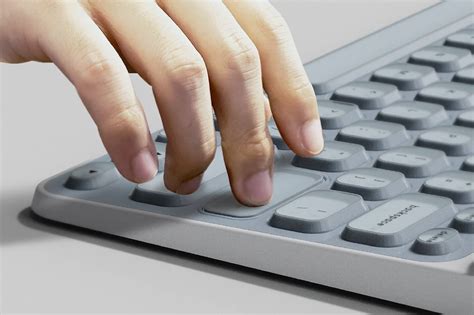In the fast-paced world of programming and computer-intensive work, the tools we use can either make or break our productivity. Recently, keyboard customization has been a hot topic among tech enthusiasts and professionals alike. This discourse gained momentum with the debate over the usefulness of underscores in keyboard layouts and led to discussions about various unconventional approaches, including adopting Japanese keyboards. Let’s dive into how these modifications are revolutionizing typing and the different perspectives that have emerged from the tech community.
One fascinating observation is the lengths to which individuals go to enhance their typing comfort and efficiency. For instance, one commenter shared their experience of almost opting for a 20-key left-hand gaming keyboard to reduce the finger strain associated with common commands like cut, copy, and paste on a MacBook. This approach highlights a broader trend of leveraging gaming accessories in professional settings, driven by their design for rapid, repetitive key presses. It’s not just about minimizing physical discomfort but also about streamlining workflows and enhancing precision in coding and other repetitive tasks. Imagine reassigning common shortcuts to a single keystroke – the implications for muscle memory and speed are considerable.
Although hardware adjustments can be quite effective, software solutions are also heavily favored. Many users argue that remapping keys on your current keyboard layout can achieve similar benefits without the need for new hardware. For example, custom key maps in applications like Emacs allow for context-sensitive input, meaning the same key can generate different symbols depending on the cursor’s position. This kind of flexibility is crucial for those who frequently switch between different programming languages and environments. Moreover, tools like XFree86 and modern equivalents enable substantial customization of key inputs, making it possible to retain the ergonomic familiarity of your existing keyboard while gaining the functional benefits of a new layout.
A particularly intriguing discussion emerged around the use of blank keycaps. Some keyboard enthusiasts opt for these to deter casual typers and to allow for highly customized layouts. While this might seem counterintuitive, it offers the flexibility to map any key to any function without the visual clutter. Custom layouts can be created using tools like QMK firmware for mechanical keyboards or Karabiner-Elements for macOS users. These allow for complex macros and reassignments, turning your keyboard into a highly personalized tool. Imagine hitting a key to insert code snippets directly, or switching layouts for different tasks seamlessly. The level of personalization can be both empowering and liberating.
Ergonomic keyboards also feature prominently in discussions. Models like the Kinesis Advantage or the Ergodox have been praised for reducing hand strain and promoting a more natural typing posture. These keyboards typically offer split designs, allowing each half to be positioned as per user preference, and often come with programmable keys. Given the potential for repetitive strain injuries (RSI) in prolonged typing, these ergonomic designs not only enhance comfort but can also lead to significant long-term health benefits. For instance, incorporating macros to automate repetitive tasks can save countless hours and reduce the need for awkward hand positions.
Cross-cultural keyboard layouts also provide fascinating insights. For instance, Japanese keyboards are noted for having a narrower spacebar and additional keys, which some users find helpful for programming. The idea of using Japanese keyboards to avoid underscores is intriguingly mentioned, though it can be disputed by those who argue that key remapping is a more practical solution. However, international layouts such as the EurKey, combining the US layout with additional characters for European languages, also save significant time for multilingual users. This blending of different keyboard traditions can lead to an optimal setup for those who operate across cultural and linguistic boundaries.
In conclusion, the conversation around optimizing keyboards for better typing is rich with ideas and innovations. Whether through hardware changes like adopting gaming keyboards or ergonomic models, or through software adjustments and custom layouts, the tech community continues to find new ways to enhance productivity and comfort. These approaches serve as a testament to the fact that even in a field as seemingly straightforward as typing, there is always room for innovation and improvement. As these discussions evolve, they reveal not just technical preferences but also deeper insights into how we interact with technology on a daily basis.


Leave a Reply